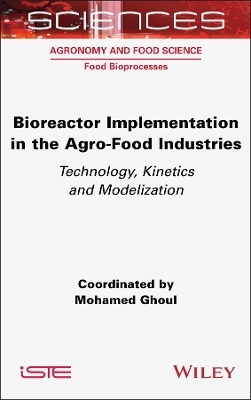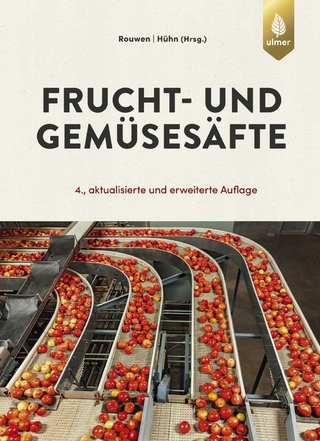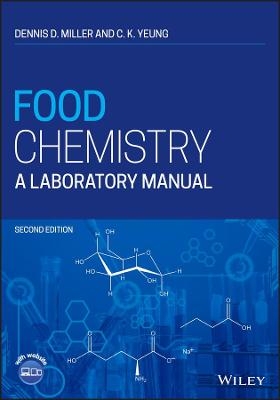
Bioreactor Implementation in the Agro-Food Industries
Iste Ltd (Verlag)
978-1-78945-155-9 (ISBN)
- Noch nicht erschienen (ca. März 2025)
- Versandkostenfrei innerhalb Deutschlands
- Auch auf Rechnung
- Verfügbarkeit in der Filiale vor Ort prüfen
- Artikel merken
However, to optimize the implementation of these processes, it is necessary to master a number of scientific concepts relating to material and heat balances, thermodynamics, microbial kinetics, extrapolation and agitation techniques, as well as the techno-economic analysis of processes.
This book aims to provide an exhaustive and precise presentation of all of these concepts, making them accessible to students, researchers and professionals alike.
Bioreactor Implementation in the Agro-Food Industries is structured in two complementary parts. The first part outlines the essential principles of bioreactor engineering. This knowledge is essential if we are to master the biological and physico-chemical processes that take place in bioreactors.
The second part presents practical examples of the use of bioreactors for the production of several ingredients and metabolites of interest.
Mohamed Ghoul is a professor at the Université de Lorraine, France, and a researcher in process engineering, specializing in the implementation, modeling and optimization of bioprocesses.
Preface xi
Mohamed Ghoul
Introduction XIII
Jean-Marc Engasser And Mohamed Ghoul
Part 1 The Fundamentals of Fermentation and Photobioreactor Engineering 1
Introduction to Part 1 3
Jean-Marc Engasser And Mohamed Ghoul
Chapter 1 Principles of Fermentation Engineering 9
Jean-Marc Engasser And Mohamed Ghoul
1.1 Mass balances 9
1.1.1 Initial–final mass balances 10
1.1.2 Instantaneous mass balances 12
1.2 Heat balances 16
1.2.1 Heat generation rate in fermenters 17
1.2.2 Air heat input and output rates 18
1.2.3 Cooling rate of a fermenter 18
1.2.4 Heat balance of a fermenter 20
1.2.5 Example: instantaneous heat balance of an aerated fermenter 21
1.3 Microbial kinetics 23
1.3.1 Stoichiometry of microbial reactions 23
1.3.2 Fermentation rates 25
1.3.3 Microbial kinetic laws 33
1.4 Oxygen consumption, solubility and transfer in fermenters 44
1.4.1 Oxygen consumption rates 44
1.4.2 Oxygen solubility in fermentation media 52
1.4.3 Oxygen transfer rate in a fermenter 55
1.4.4 Variation in dissolved oxygen concentration 62
1.5 CO2 production, solubility and transfer in fermenters 64
1.5.1 CO2 production rate 65
1.5.2 Solubility and dissociation equilibria of CO2 68
1.5.3 CO2 transfer rate 70
1.5.4 Variation in dissolved CO2 concentration during aerobic fermentation 71
1.6 References 73
Chapter 2 Fermenter Implementation: Principle and Optimization 75
Mohamed Ghoul And Jean-Marc Engasser
2.1 Optimal fermenter implementation 75
2.1.1 Fermenter optimization criteria 76
2.2 Batch fermentation 80
2.2.1 Principle of batch fermentations 80
2.2.2 Operating variables for batch fermentations 81
2.2.3 Batch fermentation simulation models 82
2.2.4 Optimization of anaerobic fermentation implementation 85
2.2.5 Optimization of aerobic fermentations 87
2.3 Continuous fermentations 94
2.3.1 Principle of continuous fermentations 94
2.3.2 Operating variables for continuous fermentations 95
2.3.3 Simulation model for continuous fermentations 96
2.3.4 Continuous fermentation dynamics 98
2.3.5 Steady state of continuous fermentations 99
2.3.6 Optimization of continuous anaerobic fermentation for metabolite production 105
2.3.7 Optimization of continuous aerobic fermentation 108
2.4 Optimal implementation of fed-batch fermentations 111
2.4.1 Principle of fed-batch fermentations 111
2.4.2 Operating variables for fed-batch fermentations 112
2.4.3 Simulation model for fed-batch fermentation 113
2.4.4 Substrate productivity and conversion efficiency for fed-batch fermentation 118
2.4.5 Optimization of fed-batch fermentation for cell production 119
2.4.6 Optimization of fed-batch fermentation for metabolite production 125
2.5 References 131
Chapter 3 Photobioreactor Engineering 133
Hatem Ben Ouada, Jihène Ammar And Mohamed Ghoul
3.1 Overview of different photobioreactor configurations 133
3.1.1 Open cultivation systems 135
3.1.2 Closed systems: photobioreactors 141
3.2 Conclusion 147
3.3 References 148
Chapter 4 Bioreactor Hydrodynamics and Mixing 155
Céline Loubière And Eric Olmos
4.1 Introduction 155
4.2 Hydrodynamics and macroscopic mixing in bioreactors 156
4.2.1 Bioreactor mixing technologies 156
4.2.2 Macroscopic flow fields 161
4.2.3 Quantifying mixing capacities 163
4.2.4 Liquid–solid mixing 165
4.2.5 Liquid–gas mixing 168
4.3 From macromix to micromix 172
4.3.1 Fluctuations and dissipation rates of turbulent kinetic energy 173
4.3.2 Description and calculation of hydromechanical stresses 175
4.3.3 Spatial distribution of hydrodynamic parameters in agitated tanks 175
4.4 Bioreactor mixture characterization method 176
4.4.1 Residence time and mixing time 177
4.4.2 Flow and velocity fields 179
4.4.3 Computational fluid dynamics simulation 181
4.5 Hydrodynamics–kinetics coupling 183
4.5.1 Kinetic models 183
4.5.2 Coupling issues 184
4.5.3 Coupling applications 185
4.6 Conclusion 187
4.7 References 188
Chapter 5 Bioreactor Extrapolation 191
Céline Loubière, Eric Olmos And Mohamed Ghoul
5.1 Introduction 191
5.2 Introducing the bioreactor extrapolation concept 191
5.3 Extrapolation methods 194
5.3.1 Geometric and non-geometric similarities 194
5.3.2 Scaling in non-aerated, agitation-based conditions 196
5.3.3 Scaling in aerated condition and based on aeration 201
5.3.4 Limits and assessment of bioreactor extrapolation strategies 205
5.4 Conclusion 206
5.5 References 206
Part 2 Examples of Bioreactor Applications in the Food Industry 209
Introduction to Part 2 211
Mohamed Ghoul
Chapter 6 Production of Fermented Beverages: Beer 213
Franck Jolibert And Mohamed Ghoul
6.1 Introduction 213
6.2 Introduction to the brewing process 214
6.2.1 Grinding and brewing operations 215
6.2.2 Filtration and boiling operations 216
6.2.3 Whirlpool operations and cooling 216
6.2.4 Fermentation, maturation and saturation operations 217
6.3 Substrate degradation pathways 219
6.3.1 Carbon metabolism 219
6.3.2 Nitrogen metabolism 220
6.3.3 Phosphorus metabolism 221
6.3.4 Sulfur metabolism 221
6.4 Metabolite synthesis pathways 222
6.4.1 Synthesis of higher alcohols 222
6.4.2 Aldehyde synthesis 223
6.4.3 Synthesis of organic acids 223
6.4.4 Ester synthesis 223
6.4.5 Diketone synthesis 224
6.4.6 Synthesis of sulfur compounds 224
6.5 Effects of physicochemical factors on the beer production process 225
6.5.1 Effect of density 225
6.5.2 Effect of temperature 227
6.5.3 Effect of acidity 227
6.5.4 Effect of inoculation rate 228
6.5.5 Effect of pressure 228
6.5.6 Effect of agitation and fermenter configuration 228
6.5.7 Inhibition phenomena 229
6.5.8 Infection by other microorganisms 230
6.6 New trends in the beer fermentation process 231
6.6.1 Yeast strain improvement 232
6.6.2 Co-fermentations 233
6.6.3 Fermentation processes 234
6.6.4 Development of rapid control techniques 235
6.6.5 Conclusions and perspectives 236
6.7 References 236
Chapter 7 Production of Biomass and Bioactives by Microalgae 239
Hatem Ben Ouada And Jihène Ammar
7.1 Introduction 239
7.2 Biomass production from microalgae 240
7.3 The main bioactives derived from microalgae 242
7.3.1 Pigments 243
7.3.2 Extracellular polymeric substances 249
7.3.3 Lipids 251
7.3.4 Polyunsaturated fatty acids 251
7.4 Other microalgae potential 253
7.5 Conclusion 255
7.6 References 255
Chapter 8 Economic and Environmental Optimization of Fermentation Processes: Ethanol and Glutamic Acid Production 265
Jean-Marc Engasser And Mohamed Ghoul
8.1 Economic assessment and optimization of fermentation processes 266
8.1.1 Methodology for economic assessment of fermentation processes 266
8.1.2 Range of cost of fermentation processes 267
8.1.3 Process cost analysis 267
8.2 Environmental assessment and optimization of fermentation processes 268
8.2.1 Environmental impacts of lifecycle assessment 268
8.2.2 Assessment of environmental impact indicators 269
8.2.3 Environmental analysis and optimization of fermentation processes 270
8.3 Optimization of the ethanol fermentation process 271
8.3.1 Ethanol production processes 271
8.3.2 Kinetics of ethanol fermentation 272
8.3.3 Optimum implementation of ethanol fermentation 274
8.3.4 Possibilities for intensifying ethanol fermentation 277
8.3.5 Environmental optimization of the ethanol production process 279
8.4 Optimization of the glutamic acid fermentation process 280
8.4.1 Glutamic acid production process 280
8.4.2 Kinetics of glutamic acid fermentation 281
8.4.3 Optimum implementation of glutamic acid fermentation 283
8.4.4 Fermentation intensification strategy 288
8.4.5 Environmental optimization of the glutamic acid fermentation process 289
8.5 References 290
Conclusion 293
Mohamed Ghoul
List of Authors 295
Index 297
| Erscheint lt. Verlag | 9.3.2025 |
|---|---|
| Reihe/Serie | ISTE Consignment |
| Verlagsort | London |
| Sprache | englisch |
| Themenwelt | Technik ► Lebensmitteltechnologie |
| Technik ► Umwelttechnik / Biotechnologie | |
| Wirtschaft ► Betriebswirtschaft / Management | |
| ISBN-10 | 1-78945-155-8 / 1789451558 |
| ISBN-13 | 978-1-78945-155-9 / 9781789451559 |
| Zustand | Neuware |
| Haben Sie eine Frage zum Produkt? |
aus dem Bereich


